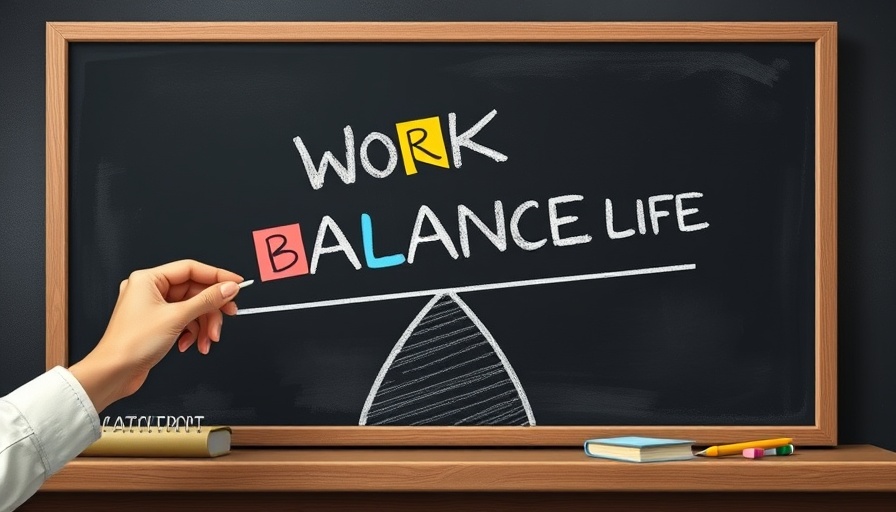
Rethinking Work-Life Balance: A Modern Approach
Work-life balance has become a buzzword in today’s workforce, promising a harmonious blend of professional and personal life. Yet, for many, this ideal feels elusive. The constant ping of notifications and looming deadlines often lead to feelings of stress and guilt, especially when family commitments collide with work obligations. As we navigate through 2025’s evolving work landscape, it’s essential to reconsider what true work-life balance means and how we can achieve it in a more meaningful way.
When Balance Becomes a Burden
The promise of work-life balance often leads to an unrealistic expectation: that employees can seamlessly juggle their job responsibilities with personal lives. However, in a culture where hustle is celebrated and "being on" at all times is the norm, the scales are tipped against us. Instead of being a tool for well-being, this concept frequently results in added pressure for workers, leading to burnout and mental fatigue.
What Employees Really Need
So, what’s the solution? Refocusing the narrative from balancing to integrating. Rather than acknowledging work and life as opposing forces, we should view them as interconnected. This means moving towards an intentional design of workplaces that support employees in all areas of their lives. Offering personalized health and benefits programs is a big step toward making this integration a reality.
Transforming Workplace Culture
Companies that prioritize employee well-being are not just implementing perks like gym memberships or snack bars; they are investing in holistic frameworks that consider mental health, family support, and overall financial wellness. These efforts transcend traditional measures of support, realizing that the demands of modern life require a more comprehensive approach.
The Shift Towards Integration
By embracing integration over balance, employers contribute to a culture of support. This means acknowledging that life doesn’t pause when employees log in for work. Instead of simply offering options, they should provide better access to critical resources such as mental health services, flexible working arrangements, and tailored benefits that genuinely meet the unique needs of their teams.
Forward-Thinking Initiatives
As we see employers begin to adopt these modern strategies, the focus will shift from simply offering more benefits to improving the quality of those benefits. Innovative companies are leading the way by creating inclusive spaces that cater to workplace diversity. For instance, mental health days, personalized caregiver resources, and financial education programs are becoming more commonplace as organizations recognize their critical importance in workforce sustainability.
Common Misconceptions About Work-Life Balance
It’s crucial to dispel the myth that achieving work-life balance means perfect equality between work and personal activities. Instead, it should be about feeling supported and fulfilled in both spaces, enabling employees to thrive holistically. Encouraging genuine time off and respecting boundaries sets the foundation for an engaged and productive workforce.
Actionable Steps for Employees
For employees, advocating for these holistic approaches means engaging in conversations with employers about incorporating integrated frameworks into workplace practices. Employees can help shape their work environments by expressing their need for personalized assistance like mental health support, flexible hours, and a commitment to work that is more aligned with their values and responsibilities.
Conclusion: Creating a Future of Work That Works
The narrative around work-life balance is evolving, and it’s time for workplace cultures to adapt to effectively serve the needs of today’s workforce. By moving towards an integrated approach, we can create environments that not only acknowledge our multifaceted lives but prioritize them. Let’s challenge traditional expectations and advocate for workplaces focused on genuine well-being and support.
 Add Row
Add Row  Add
Add 




Write A Comment